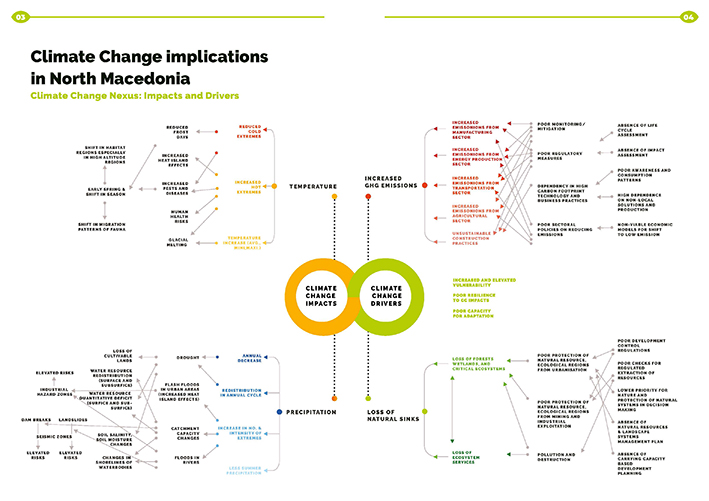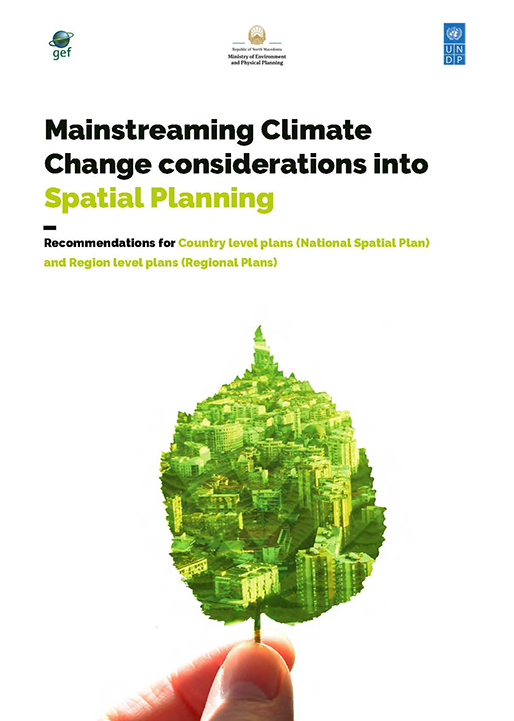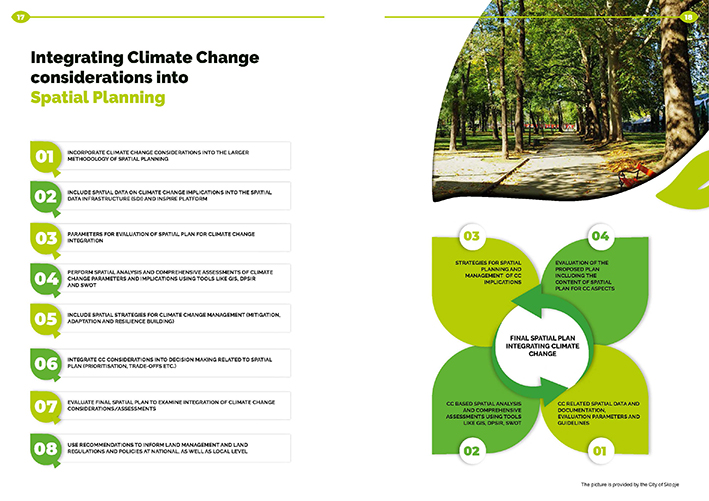New methodology for mainstreaming climate change consideration into spatial planning- interview with Lolia Mary
The conventional and traditional spatial planning process doesn’t consider the climate change risks and additional vulnerabilities or impacts. It doesn’t integrate climate change factors as a determinant in spatial planning. This is because climate change phenomenon is relatively new compared to established planning practices world over.

On that note, a new methodology for mainstreaming climate change consideration into spatial planning, with a focus on our National Spatial Plan was created by Lolia Mary, who is an environmental planner and an architect with eight (8+) years of professional experience across various scales and sectors of planning and development. Her professional experience ranges across; spatial planning and development, master planning, environmental planning and design, risk and vulnerability assessment, participatory planning, research pedagogies, alternative approaches to planning and development.
We talked to her about all the challenges she had to face making the new methodology for mainstreaming climate change consideration into spatial planning.
1. What were the main challenges you faced during the process of preparation of the Methodology for mainstreaming climate change considerations into spatial planning in North Macedonia?
One of the challenge was conducting focus group workshops and hands on exercises for evolving the methodology as travel restrictions due to the pandemic came into place. The very interdisciplinary nature of spatial planning requires considerable collaboration across departments and this also seemed to be a bit challenging. Another challenge was the absence of a census data.

2. What are the key aspects of the proposed Methodology?
The methodology is framed around the following climate change considerations; 1) Vulnerability and Risk Assessment, 2) Mitigation measures to prevent and reduce risks, 3) Adaptation measures to enhance resilience, 4) Adaptation measures to lower emissions.
Based on these considerations 5 broad objectives were derived to evolve the spatial components of the methodology;
1. Climate Change and Extreme events preparedness through risk identification, risk reduction and mitigation
2. Adaptation strategies for resource security in future scenarios of resource risk
3. Protecting natural resources of national importance and value
4. Conserving and Rejuvenating Regional Landscapes and Resource regions
5. Integrating regional and localized plans through adaptation recommendations lower level plans.
Along with this guiding objective, the methodology also informs how various contextual landscape parameters influence the larger climate change variables. This is crucial because these local conditions can aggravate or mollify the projected climate change impacts.
Spatial components were then evolved to achieve these objectives. The spatial components for integrating climate change considerations into the spatial planning process were classified into;
a) Mapping and Documentation,
b) Spatial analysis,
c) Strategies and Decision making tools and mechanisms.
Spatial components at National, Regional, Urban and Neighborhood scales are proposed, to ensure cross scalar integration. The other key aspect of the methodology is recommendations for enabling integration of the proposed spatial components into the larger planning framework of the country.
3. What are the main benefits from the proposed Methodology for mainstreaming climate change considerations into spatial planning in North Macedonia?

The proposed methodology;
1. Brings together best practices for climate change adaptation from across the world into an applicable format/framework for the country
2. Enables the planning agency to identify specific spatial data and analysis relevant to climate change vulnerability, risks, adaptation etc.
3. Recommends strategies and decision making tools to achieve climate change resilience and adaptation through spatial planning
4. Highlights the need and role of various departments and organizations promoting collaboration
5. Provides detailed method for application of each of the proposed strategic components of spatial planning
If integrated and applied into the various spatial plans (such as; the new national spatial plan, or regional plans or urban plans);
· Considerable risks associated with climate change or disasters can be avoided
· Human, economic, environmental losses and costs from climate change risks can be reduced
· Important landscape systems, natural resources and ecosystem services can be protected and utilized beneficially to make the country more resilient
· The country's contributions to global carbon emissions can be reduced

4. How does this methodology relate to the NDC?
NDC's broadly aim to reduce the emissions contributing to global climate change. NDC's also aims to adopt policies for various sectors that can help reduce emissions while achieving development goals. Due to the interdisciplinary nature of spatial planning, it can influence multiple sectors and thus emissions across sectors. In that respect, spatial planning can harmonize or balance varying interests and put spatial provision concepts to avoid many risks and emissions.
Low-impact, ecosystem services based spatial planning strategies and policies can reduce emissions, locally mitigate climate change variables and risks. This can facilitate other sectors to make better choices in terms of technology and policy as a climate change sensitive spatial plan can leverage ecosystem services instead of technologies with high carbon footprint. Similarly, by identifying areas most vulnerable to future risks, one can make informed development choices and thereby avoid economic, environmental and social costs associated with these risks in the future.
Mainstreaming Climate Change considerations into Spatial Planning
-
Корисни линкови
26-01-2021 -
Справување со климатските промени и загадувањето на воздухот во градот Скопје
29-04-2018 -
Финансирање во климата
28-01-2022 -
Микронаративи
08-06-2022
{{"article.lastestPosts"|translate}}
-
Нови финансирања за унапредување на природата и биолошката разновидност на Зелената агенда за Западен Балкан
11-03-2025 -
Започна проектот за развој на 1-от и 2-от двогодишен извештај за транспарентност и 5-от национален извештај за климатски промени на С.Македонија
04-03-2025 -
Земјоделски форум за климатски промени: Се изнаоѓаат решенија за поголема климатска отпроност на заемјоделието
02-12-2024 -
Заврши COP29, центарален фокус на финасирањето за климата
02-12-2024



 Мод за знаковен јазик
Мод за знаковен јазик Говорен асистент
Говорен асистент Означи линкови
Означи линкови

 Зголеми маус
Зголеми маус